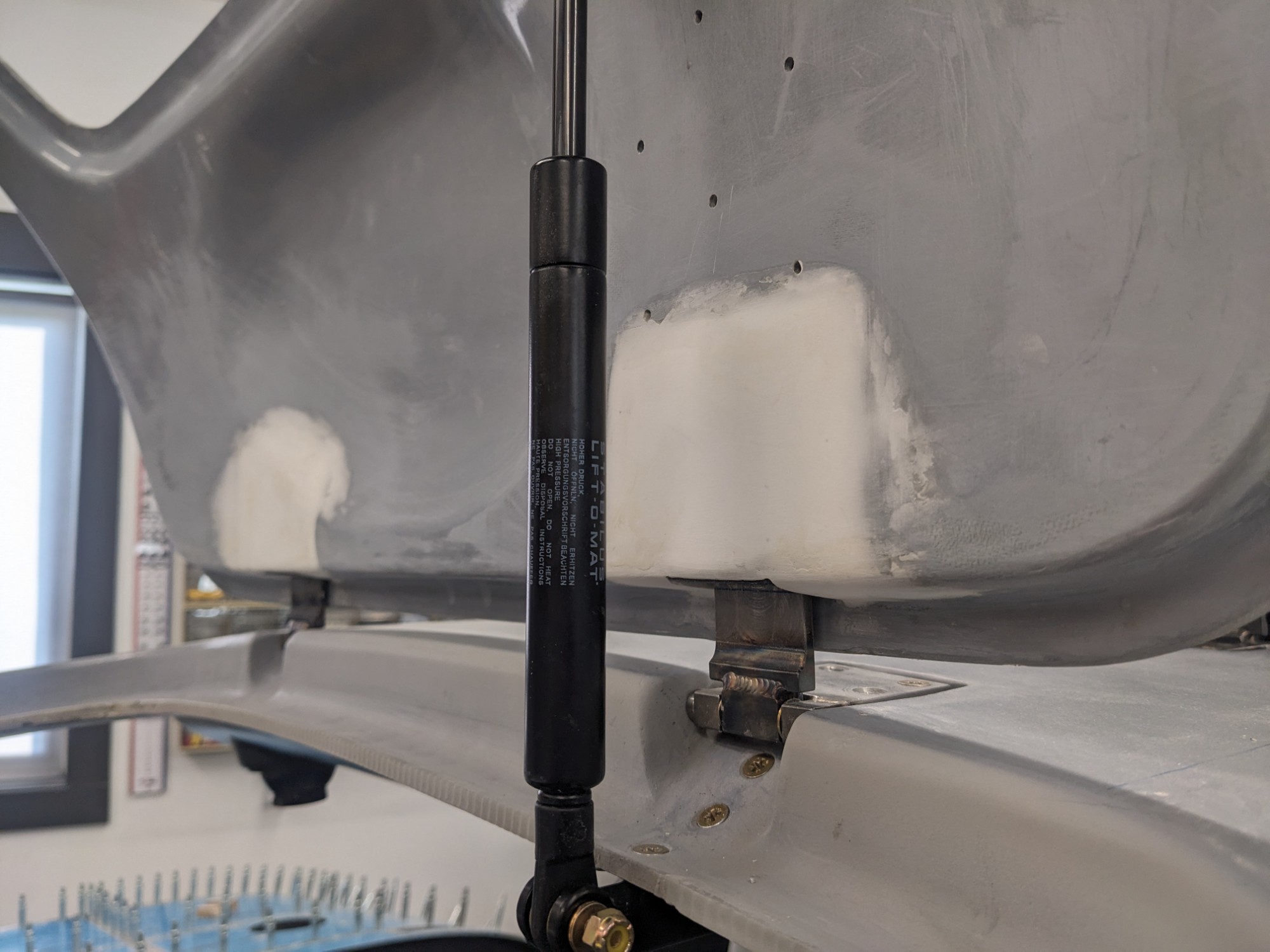I am using McMaster door seals which require that the hinge attachment areas in the door be covered to complete the seal. I didn’t like the idea of burying nutplates here (as used by one after-market option) but I liked the idea of being able to remove the doors with just a screwdriver from the outside.
I designed a removable 3D-printed tray that would hold the lock nuts instead. This allows the doors to be removed easily without having to get a wrench inside the pocket. It also allows the hardware to be replaced if needed.

The recess on the nut side of the tray receives the hinge. The flange is slightly taller than the thickness of the hinge to allow the hinge to slide in easily. The slot allows an Allen key to be used to remove the tray if needed. The outside edge of the tray is angled to match the angle of the door edge.

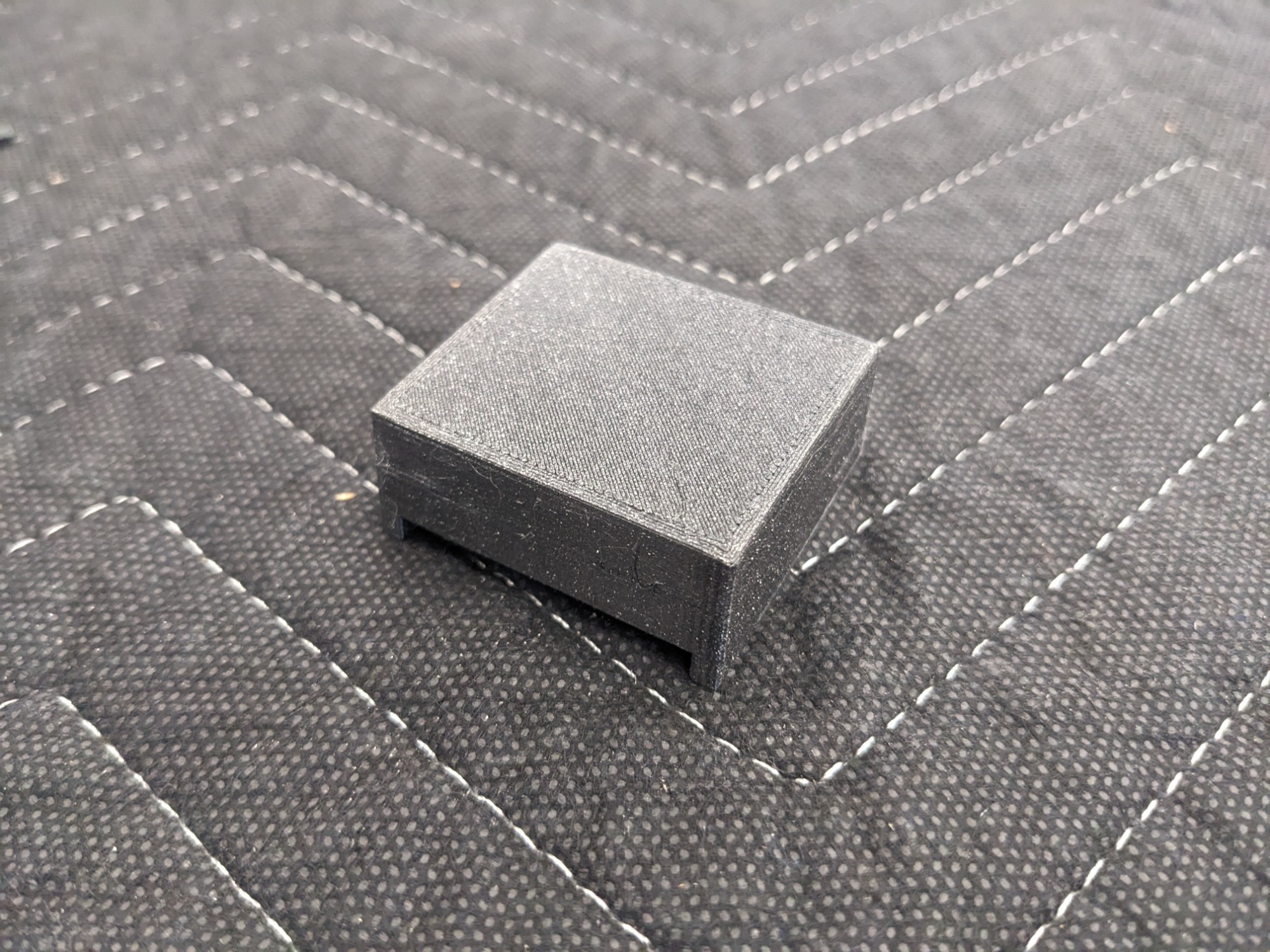
I needed shims in a few places to level the door with the surface of the cabin top. I used excess fiberglass from the headliner as these were thin and easy to stack to get the right depth.
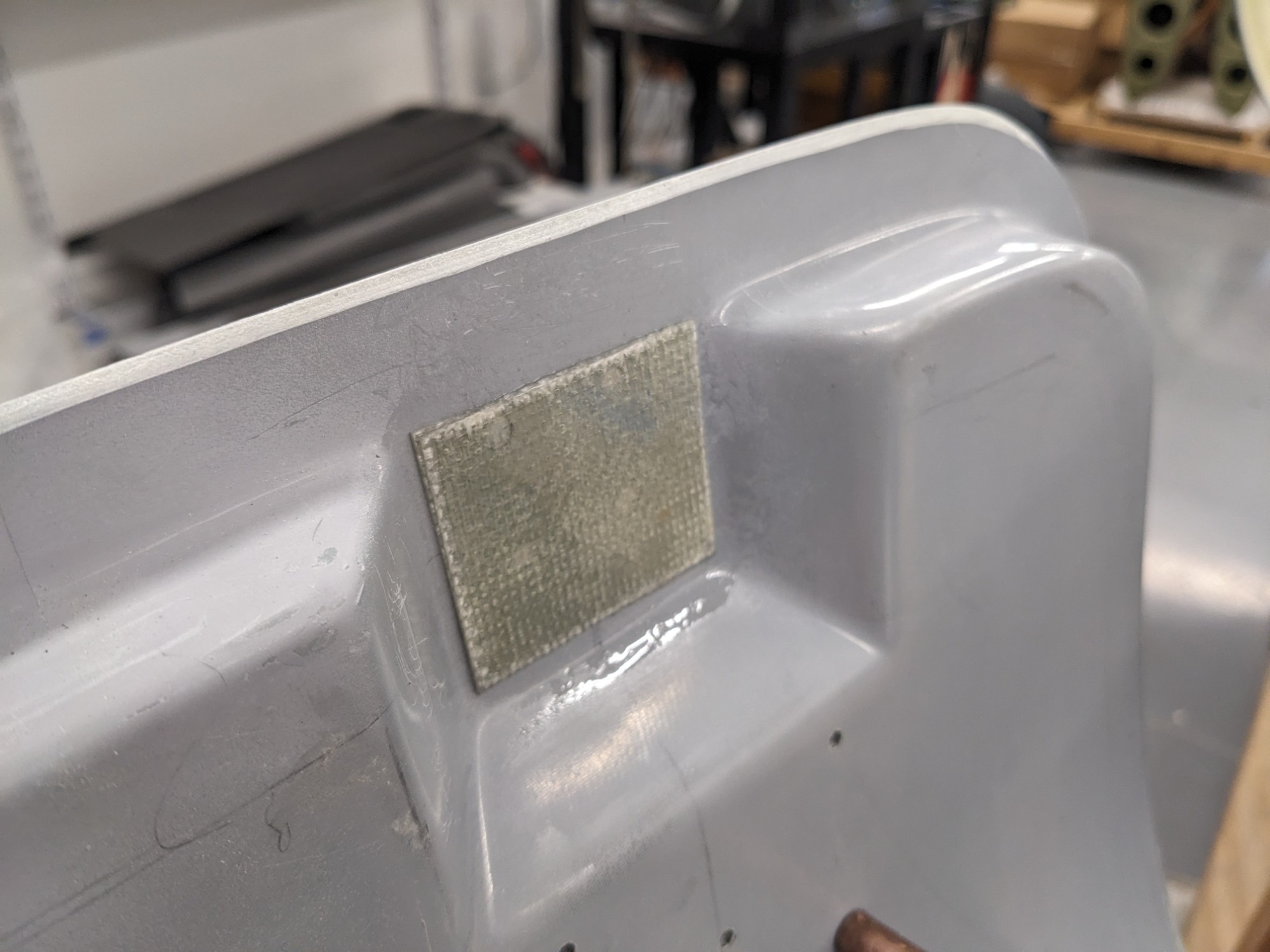
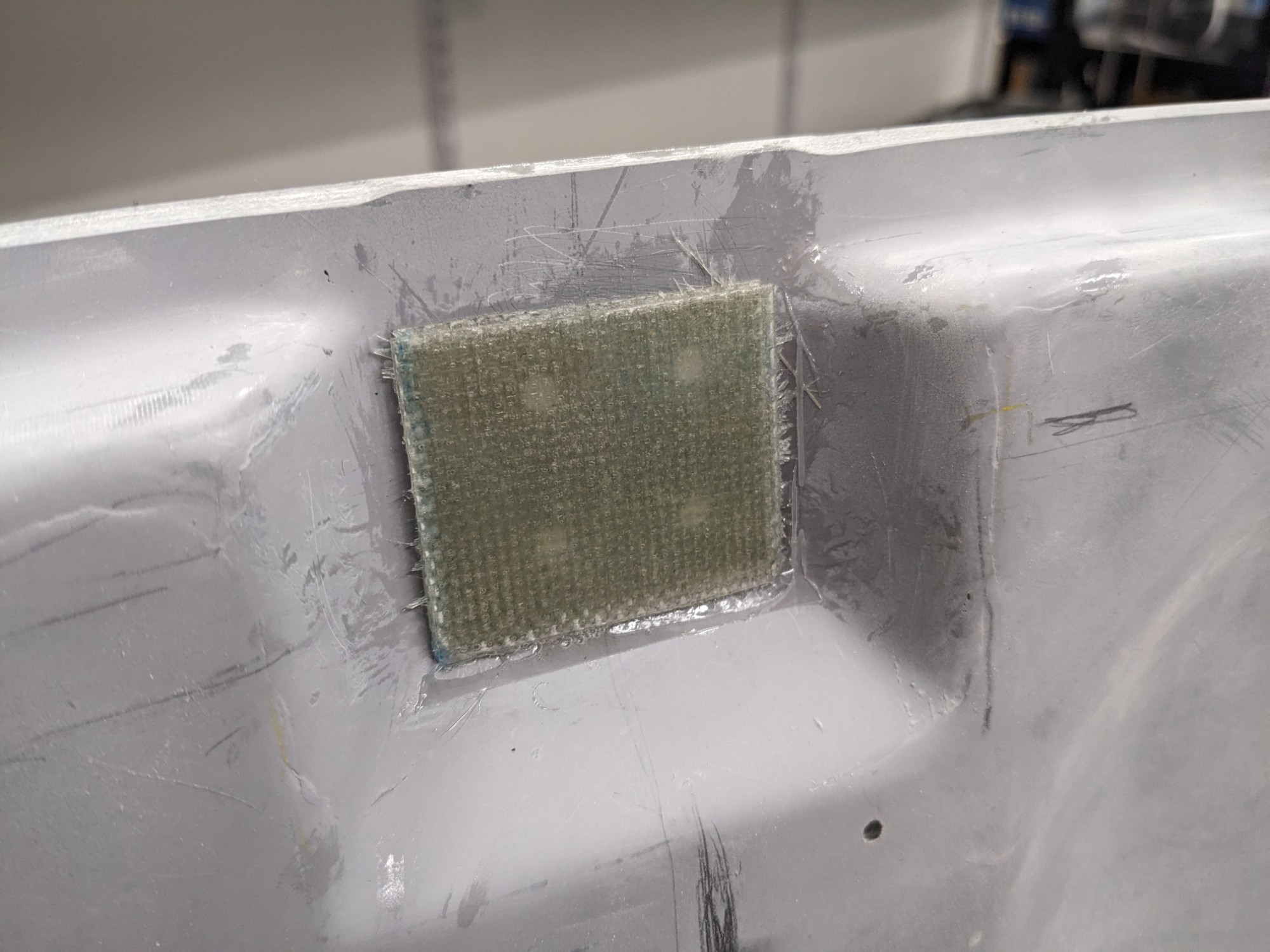
I initially tried making the pocket by using micro around a sacrificial tray, covered by two plies of fiberglass. I had used mold-release but I was unable to pull the tray out when it cured.
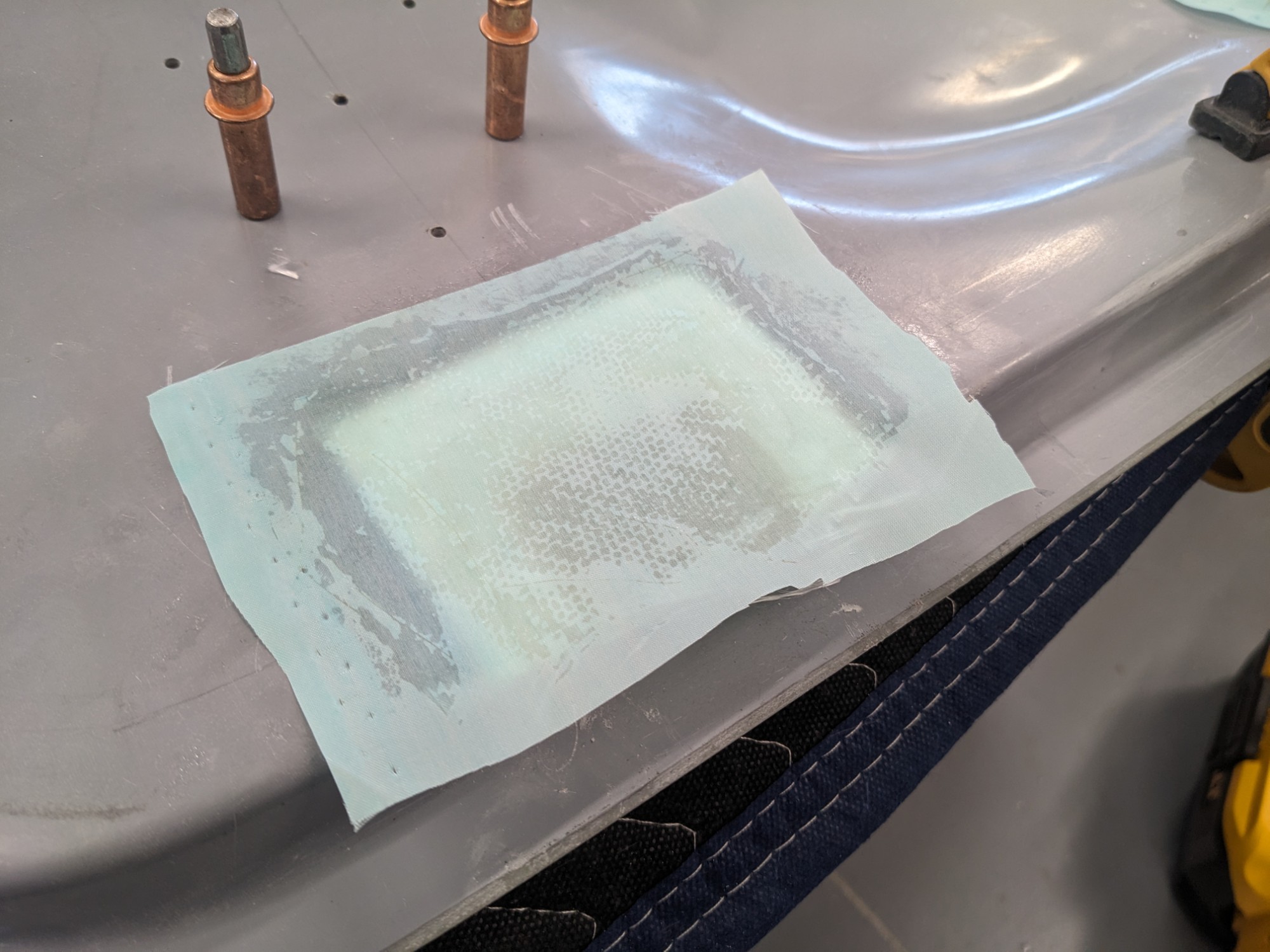
I instead removed the “roof” of the pocket and the fiberglass. This left the walls of the pocket which gave me the basic structure that I needed.
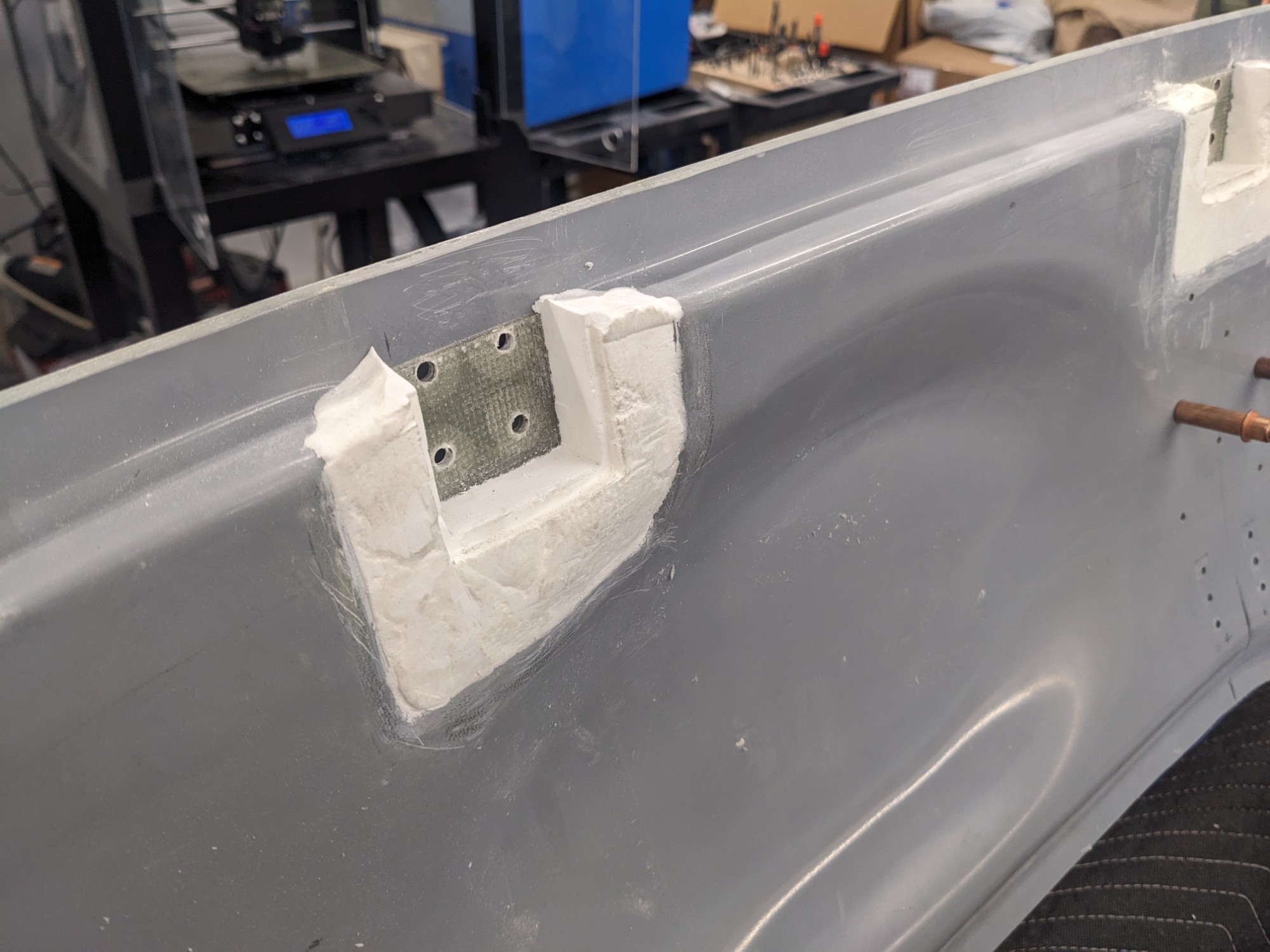
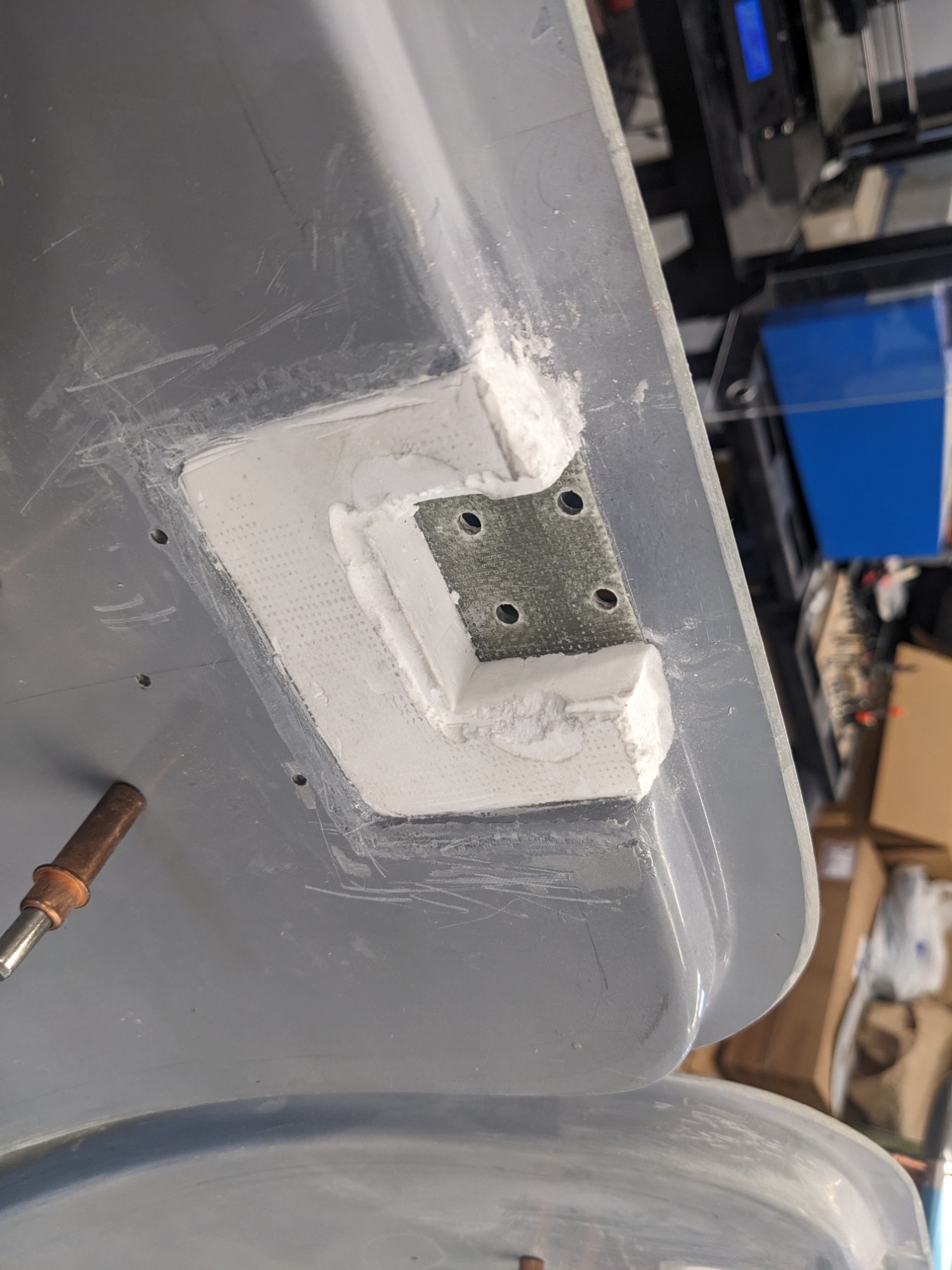
I then inserted another sacrificial 3D-printed mold that would tear away more easily and covered it with another piece of fiberglass scrap from the headliner (this meant that the surface touching the mold wasn’t wet).
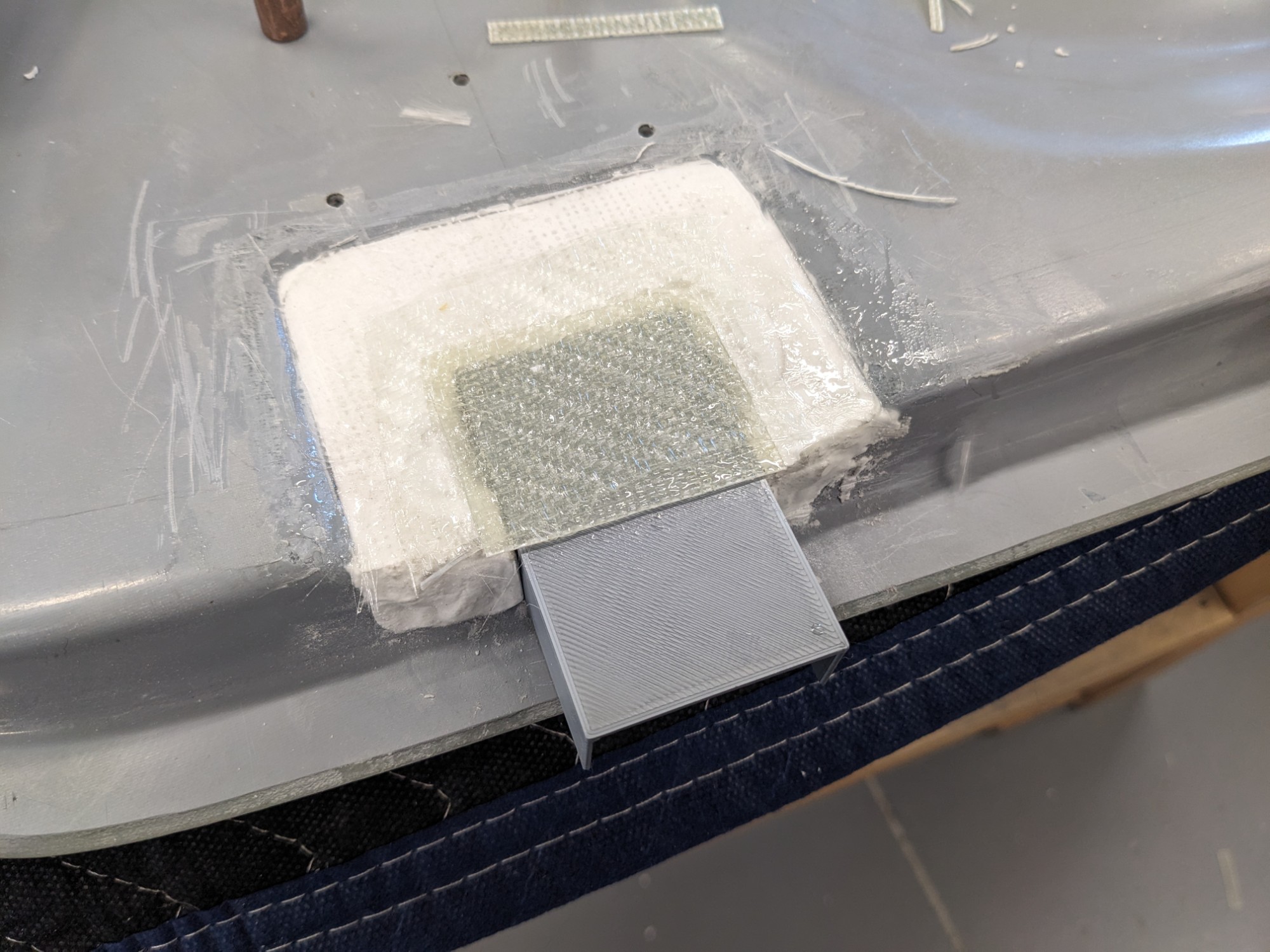
I then covered this with a couple of plies of fiberglass to make the transition to the door. I was then able to remove the sacrificial tray while the fiberglass was curing.
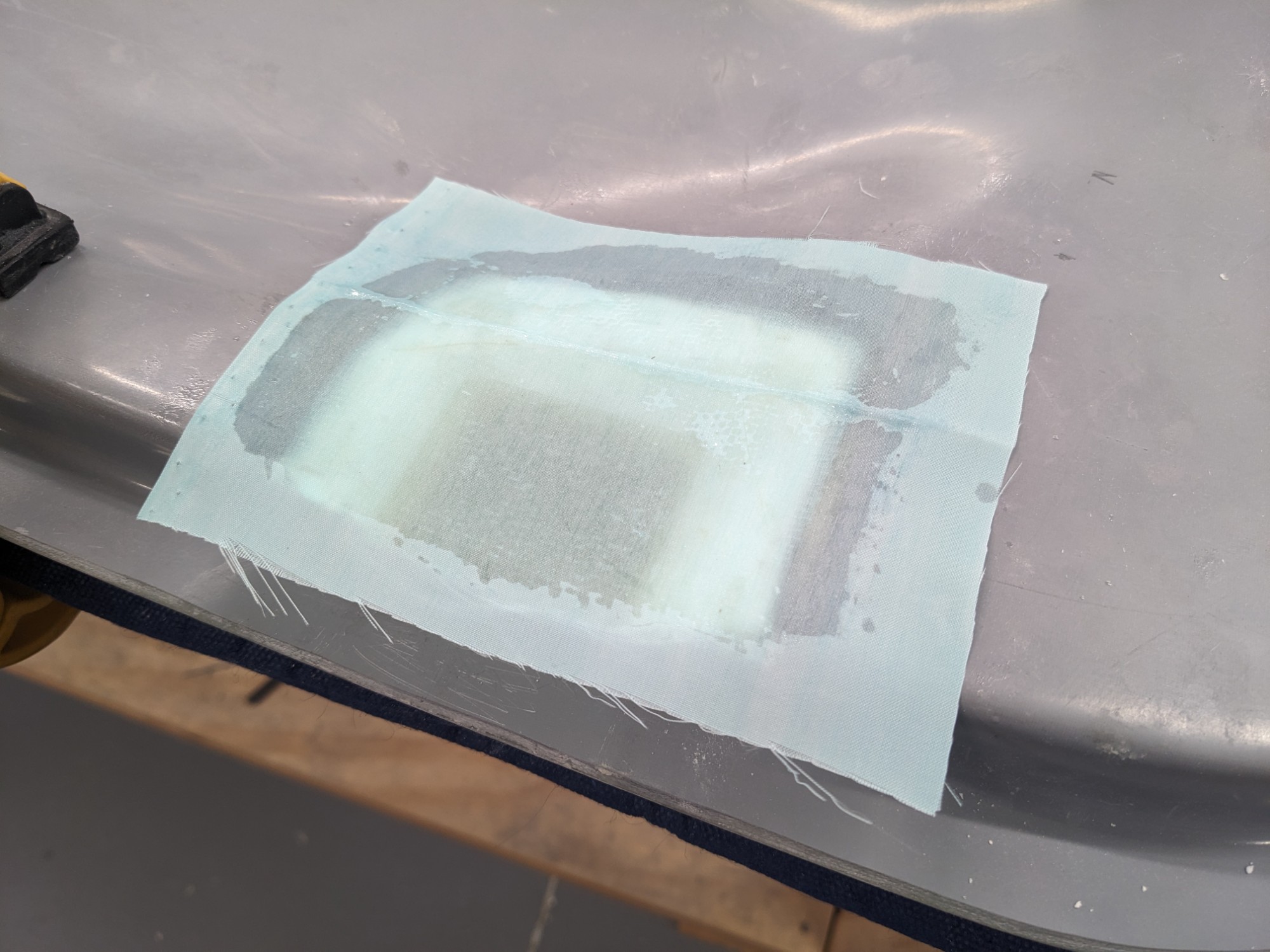
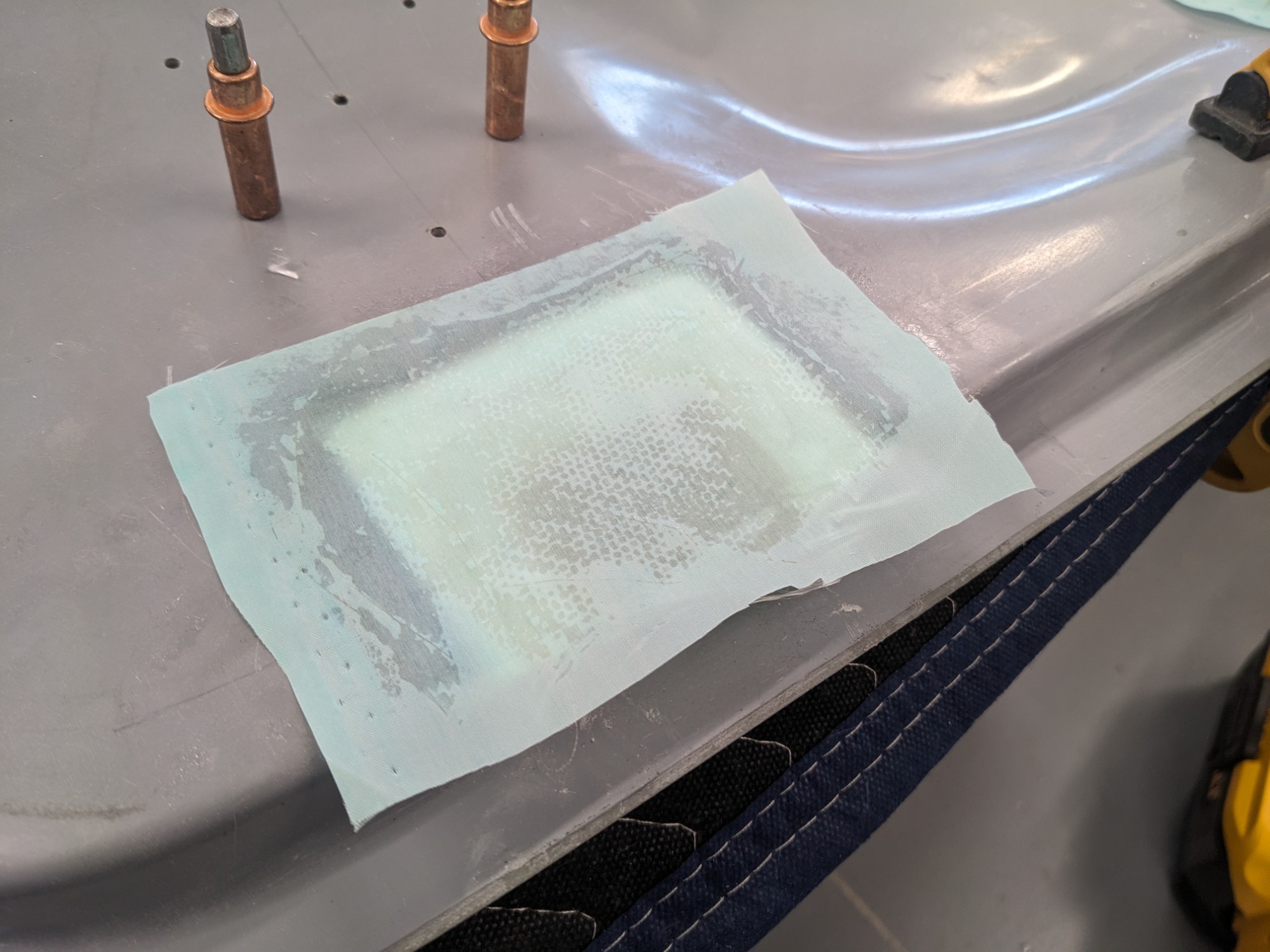
This was then covered with micro and sanded to the profile of the door.
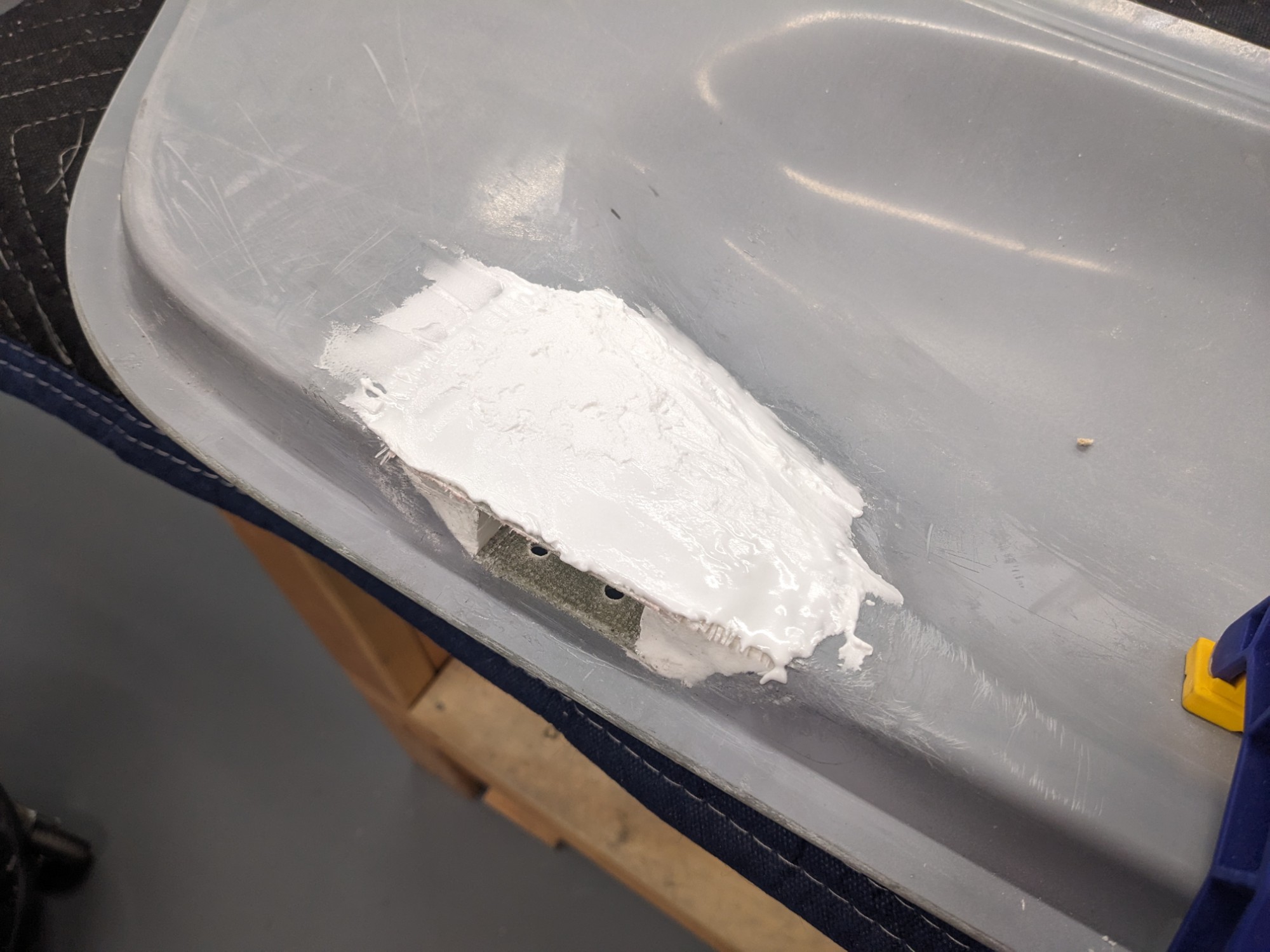
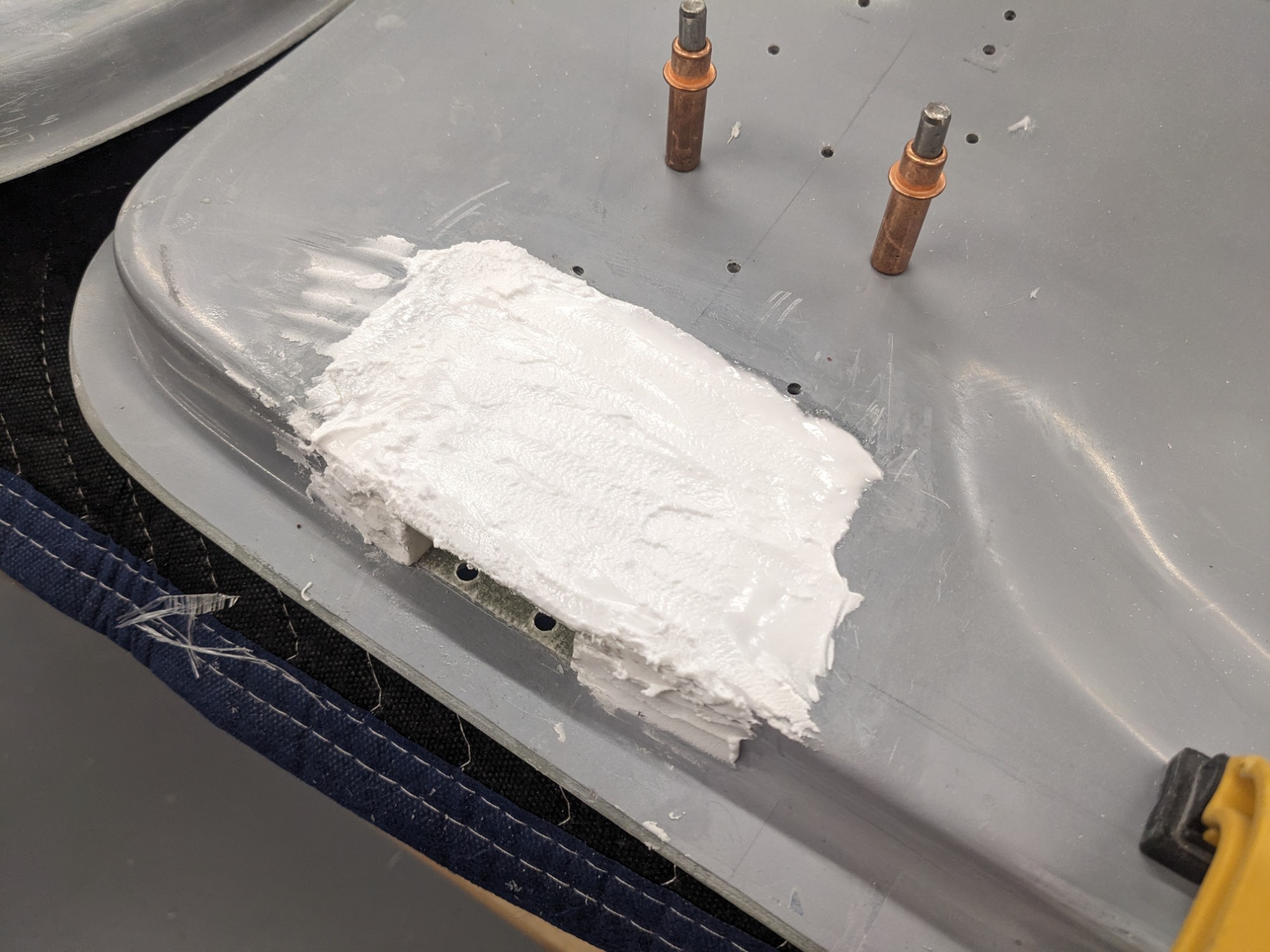
The tray is then inserted into the pocket. It holds securely enough that it won’t fall out. The hinge is then slid into the slot in the tray. The screws can then be installed from the outside of the door with the door closed.
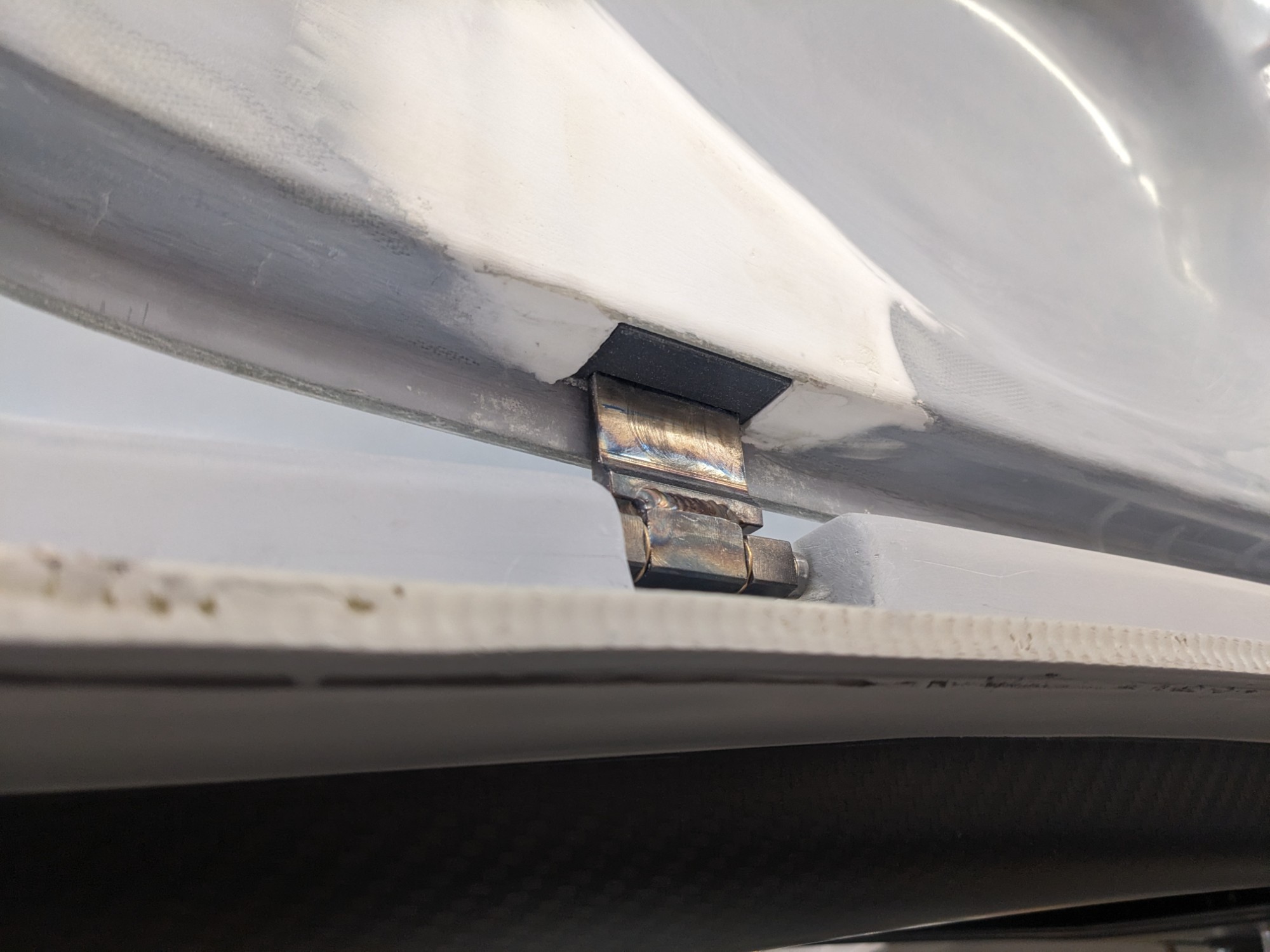
The door hinge was removed from the cabin top when I took this picture but the door hinges do not need to be removed from the cabin top to remove the doors.

The tray can be removed by inserting an Allen key, turning it into the slot, and pulling out the tray.
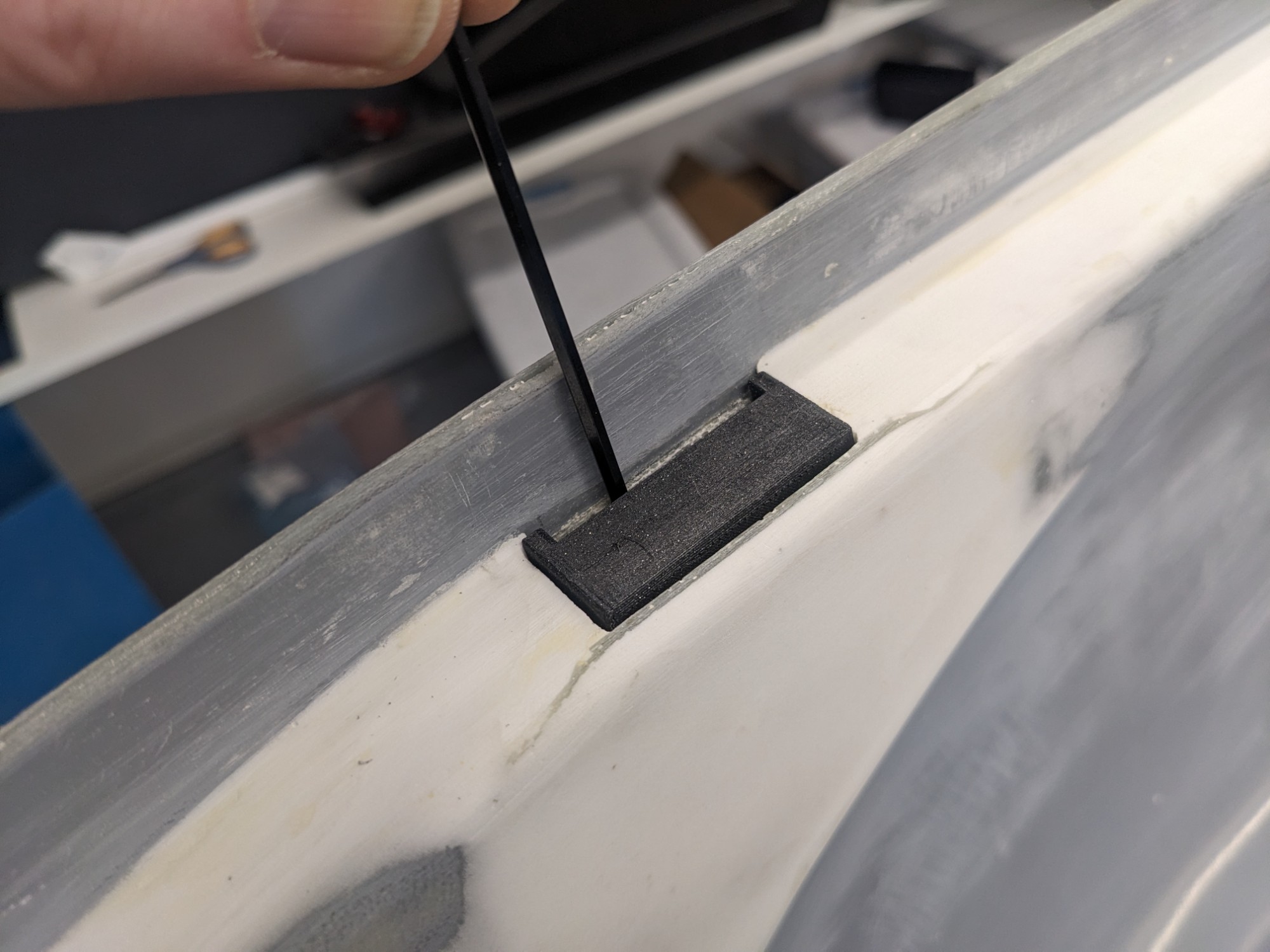
The tray face sits flush to the door, it allows the door to be fully-sealed, and all of the hardware can be replaced if needed.

